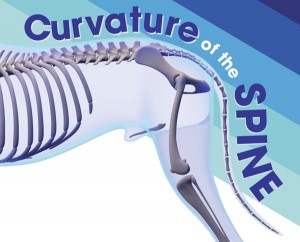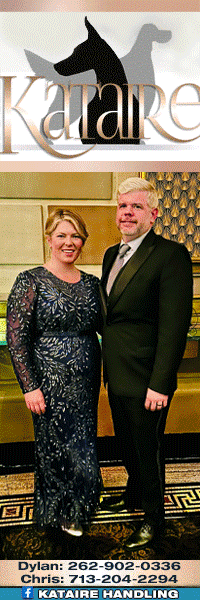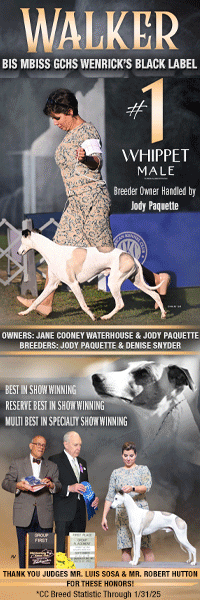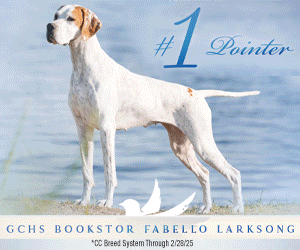Curvature of the Spine
Click here to read the complete article
 By Wendell Sammet
By Wendell Sammet
The “Curvature of the Spine” illustrates a dynamic representation of the vertebral spine. The vertebral spine is composed of the Cervical spine, the Thoracic spine and the Lumbar spine, extending from the head to the tail, known as the Topline.
The Vertebral spine’s “Curvature of the Spine” is composed of the Thoracic spine (chest erection) and the Lumbar (loin), extending from the withers to the tail, known as the Back.
The function of the spine is for the attachment of muscles and ligaments to their Facet developing the “Curvature of the Spine”.The various shapes and size of its region indicate the muscle development.
Despite the obvious double curve in the Thoracic and Lumbar areas, we still speak of the back as being level. Although this is false, the illusion of straightness is due to the various lengths and slant of the spine.
The vertebral spine is the back of the vertebral column composed of 2 regions, the Thoracic and the Lumbar or 21 vertebrae extending from the withers to the tail.
Although the Thoracic region is known as a portion of the back. Its main function is to form and support the rib cage.
The rib cage is made up of 13 pairs of ribs and a vertebral structure called the Sternebrae. A typical rib consists of 3 basic portions, the vertebral extremity, the sternal extremity and the shaft, the main body of the ribs.
The vertrabral extremity is the proximal portion of the rib, the head, neck and tubercle.
The head is round, hard and smooth, it articulates with the corresponding sock-et, a cup shape depression of the vertebrae.
The neck is just distal to the head and rib.
Click here to read the complete article

Short URL: https://caninechronicle.com/?p=191265
Comments are closed











